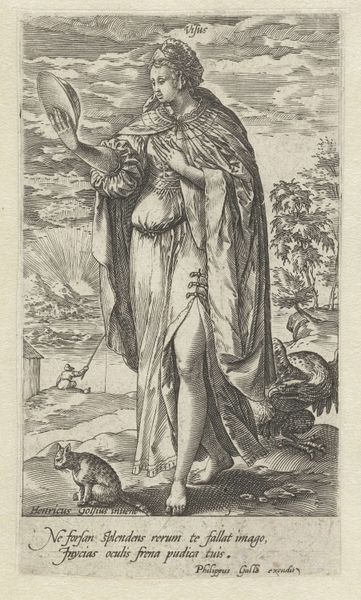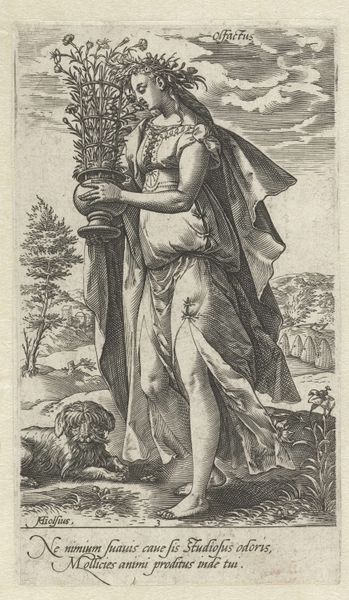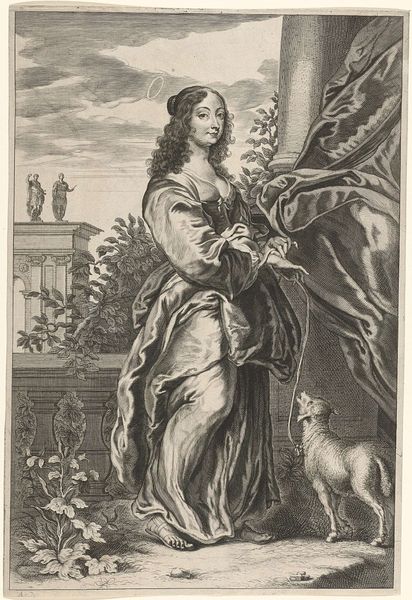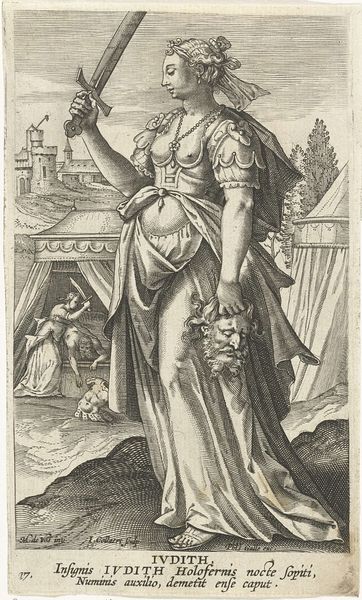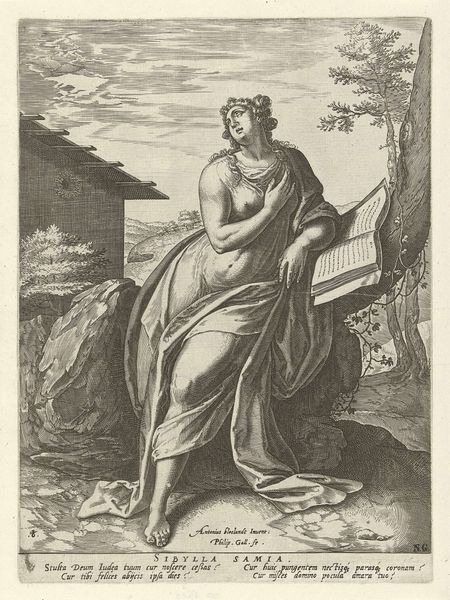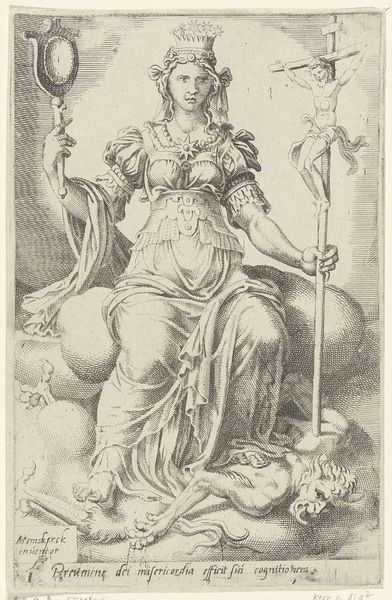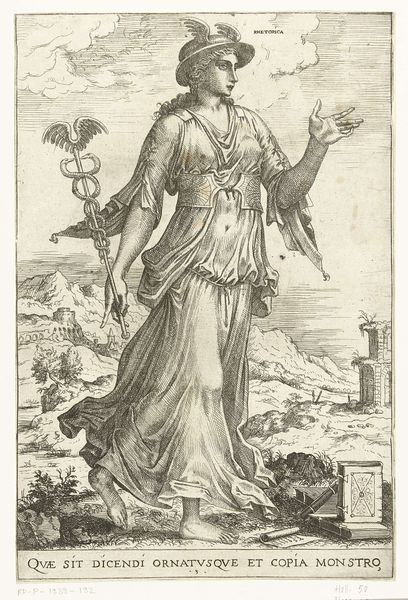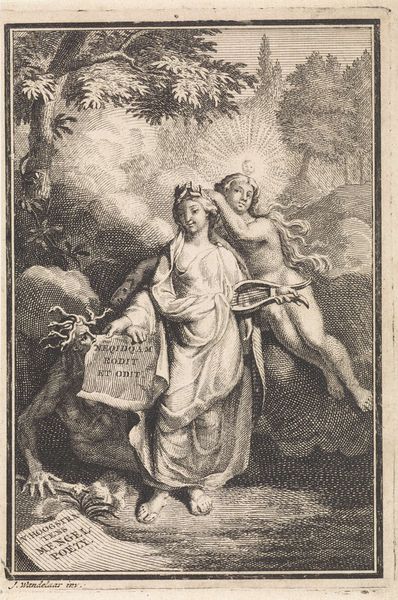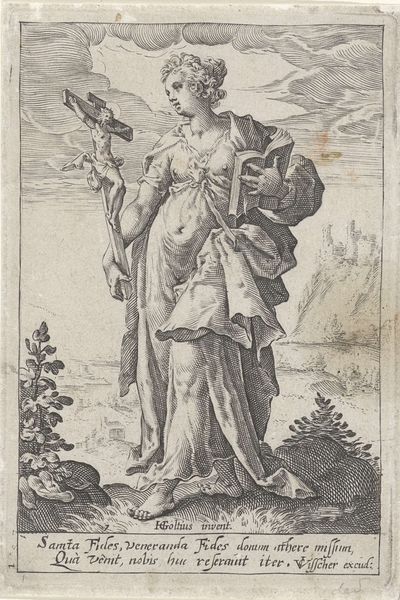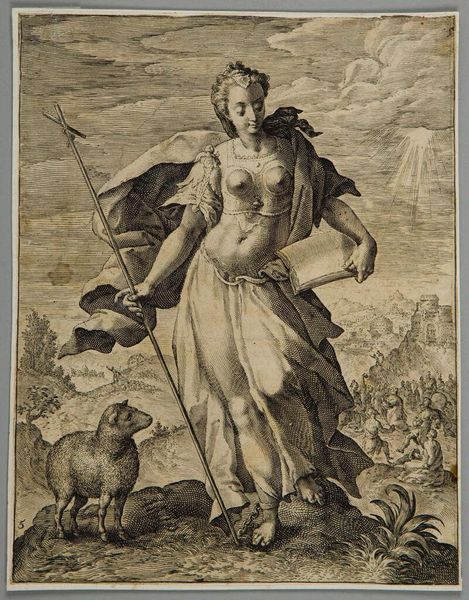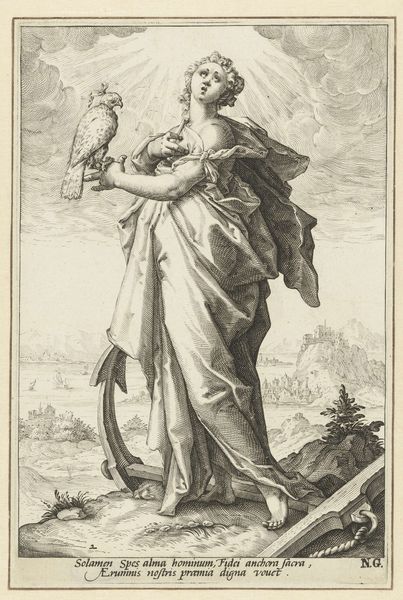
print, engraving
#
allegory
# print
#
old engraving style
#
figuration
#
history-painting
#
northern-renaissance
#
engraving
Dimensions: height 150 mm, width 98 mm
Copyright: Rijks Museum: Open Domain
This print of H. Agnes was made in the late 16th or early 17th century by Cornelis Galle I, using the technique of engraving. Engraving is an intaglio process. That means the image is incised into a surface – in this case, a copper plate – and then filled with ink. The plate is then pressed onto paper, transferring the image. Look closely, and you can see the crisp, precise lines that are characteristic of this technique. It's a labor-intensive process, demanding highly skilled artisans. The engraver has to be precise and methodical, translating the original image into a network of lines and marks that can be reproduced over and over again. In its time, this print was a form of mass production, albeit one that relied on specialized skill. Consider it as part of a larger network of image-making and distribution, allowing devotional images to circulate widely. This print demonstrates the convergence of art, craft, and commerce in early modern Europe.
Comments
No comments
Be the first to comment and join the conversation on the ultimate creative platform.
